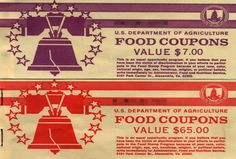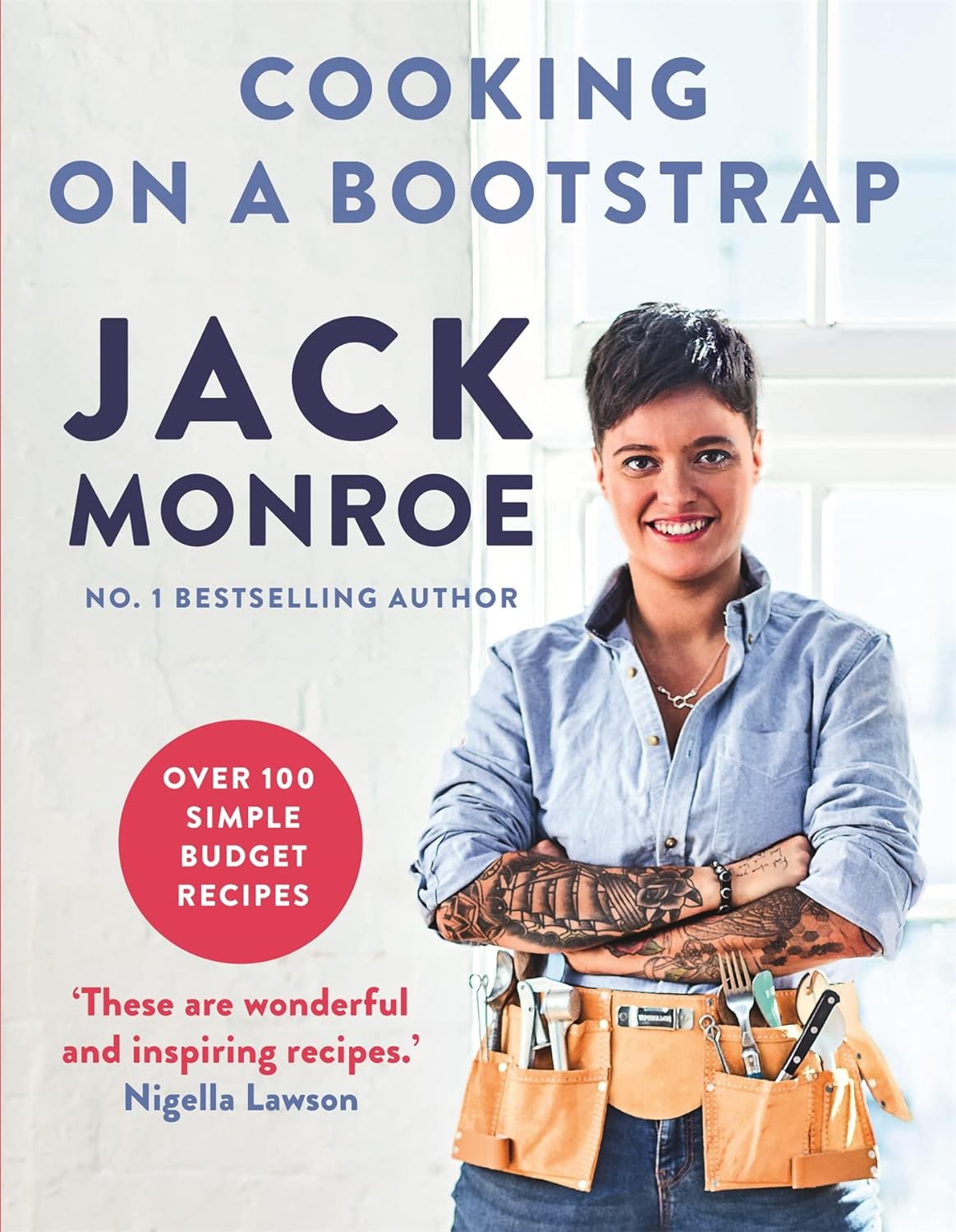 Life on the Food Chain
Life on the Food Chain
The cost of food has become headline news in the current political environment. To hear the MAGA Party tell it, everyday Americans somehow find it hard to put food on the table, despite a booming economy, record-low unemployment, and inflation mysteriously under control. With the cherry on top of this supposed indictment of the Biden administration taking the form of useful idiot Tucker Carlson proposing that everyday Russians have it better, although over 60% of Russians spend half of their salary on food, according to Russia’s state-owned news agency TASS. (See “Tucker Goes Grocery Shopping In Russia,” by Ed Scarce, Crooks & Liars, February 16, 2024. Note: Auchan, where Tucker chose to shop, is a Moscow branch of a hypermarket chain from France.)
Facts: “The typical U.S. household spends 9% of its income on food — $7,316 per year. The average cost of groceries per month is $412, which makes up about 68% of our food budgets. The remaining $198 per month is spent dining out. Average spending on food per month: $610.” (Based on U.S. Department of Labor Statistics reports. See Lindsay Bishop’s January 10, 2024 analysis and breakdown here.) Which means that roughly 30 percent of the average household’s food costs go to “dining out” — which I assume also includes takeout and ordering in, food whose ingredients you don’t shop for and prepare yourself.

Tucker Carlson shops for groceries, Moscow supermarket, February 2023, screenshot
•
Meanwhile, the comparable stats for Russia indicates that the lucky average Russians whom Tuckums envies spent 33 percent of their average household incomes in 2022 on food. And that’s the year Putin’s war on Ukraine just got underway; food costs have increased considerably since then, not to mention the shortages that have plagued Russia forever. Carlson seems blissfully unaware of the dramatic gap between U.S. and Russian incomes. Indeed, he shows no grasp of even the most fundamental rules of economics. Perhaps that explains why — as Vladimir Vladimirovich slyly pointed out during treasonous Carlson’s homage-cum-interview with him — Tuckums failed in his effort to join the CIA as a young sprat.
I won’t get into the hypocrisy of Republicans’ performative outrage over food costs while they deny schoolkids summer lunches and do their level best to eviscerate the SNAP benefits program for low-income people. Instead, I’ll just relay my experiences with food costs over the past decade-plus.
Eating Well is the Best Revenge
Eleven years ago, in early 2013, when Anna and Jacky went back to mainland China for a lengthy stay, I undertook and detailed at this blog a food experiment: not just cooking for myself alone every day but eating well and healthily on a budget based on what was then the monthly New York City Supplemental Nutrition Assistance Program (SNAP) allotment for a single adult.

Western Beef, Bay Street, Staten Island
The average monthly SNAP allotment for one person then was $140; the maximum was $200. I put myself roughly in the middle, budgeting $180 — $6 per day. For three months, living alone, I stuck strictly to that limit while tracking my food purchases and meals in spreadsheets. To my surprise, even in the relative food desert of my working-class Staten Island neighborhood, I ate very well: tasty, nutritious, healthy food, all my favorites, no major menu changes involved.
Granted, my situation didn’t typify that of all SNAP recipients. First of all, I had a full kitchen, with a gas stove/oven, a microwave, a toaster-oven, and a refrigerator with a freezer compartment. Plus a reasonable supply of cookware and kitchenware. None of it fancy, all of it used but serviceable. Nothing out of the ordinary (though this seemingly modest version of “the ordinary” remains out of reach for many).

Catfaced tomato (Cheshire variety). Photo © copyright 2013 by Anna Lung.
I also had access to a small backyard garden where I could grow some vegetables. A SNAP allotment would have covered the costs of some tomato and cucumber and squash plants, which would have added substantially to my food supplies at minimal cost. Since such purchases wouldn’t have come to harvest during my test period, I didn’t factor them in.
Three intangibles contributed greatly to my success. First, the habit of smart shopping, acquired from my parents at a very early age. I’m an inveterate bargain-hunter and comparison shopper. Second, healthy eating in general — those grade-school charts of the food groups made a deep impression on me, and while I don’t follow any plan rigorously I strive for a balanced diet. Third, I’ve cooked for myself (and others, including my son Edward) since grad school in San Francisco; I don’t consider it a chore. To the contrary, I enjoy it, and prefer it to both dining out and ordering in.
•
Fast forward a decade and move the locale 110 miles north, to an upscale Catskills town with just one walking-distance supermarket (smaller but much better than Western Beef on Staten Island). Two larger markets 20 minutes away by car or bus. More options a bit further away. And ample garden space. Substitute a family of three adults for my previous solo venture. Has anything changed?

MyTown Marketplace, Stone Ridge, NY
We periodically analyze our household expenditures so that we can budget wisely going forward. Now that we’ve settled in up here, looking at our food bills for three months and comparing them to the current monthly standard SNAP allotment for a household our size ($740 in New York State), how are we doing?
To answer that, I kept our food-purchase receipts for three months last spring, April-June 2023. Tripled (for the three of us), and adjusted for inflation, the $180 per month that I allowed myself in 2013 comes out as $696, $44 less than the 2023 COLA-adjusted SNAP allotment for a household our size. I should add that, comprising as it does three adults, our household comes in half a person larger than the 2023 national average of 2.5.

Anna’s brioche and pork buns
During that quarter last year we spent roughly $700 monthly for food, or under $8 per person per day. Which hasn’t changed significantly since then. And we eat very well. So, while our financial situation makes us ineligible for those SNAP benefits, if we qualified they would more than suffice.
No special trick involved, just the same three intangibles. Anna and I enjoy food-shopping together, and our nearby market, though more upscale than Western Beef back in Stapleton, has house brands, other bargains, and sale items. We eat healthily: a variety of whole grains, vegetables and fruits, meats and eggs and cheese and tofu and nuts for proteins. We rarely buy processed or prepared foods — a little Genoa salami or sliced deli ham, an occasional roasted chicken. Finally, we cook for ourselves — either Anna or I make dinner every night. (Jacky pulls his own weight with carpentry, clearing the grounds, cutting wood, and other chores.)
•

Anna’s wontons
By the way, our food costs for that spring quarter included the full advance payment for a twice-monthly batch of organic Chinese vegetables grown locally by a husband-and-wife team. Our subscription to this CSA (Community Supported Agriculture) project cost $450 for 10 bi-weekly shares of the harvest, June through October.
This represented an extravagance; what we got, quantitatively, cost way more per pound than anything else we bought. We like these folks, and wanted to support their effort. And their produce was excellent. (With that said, I don’t think we’ll repeat our subscription this year. Instead, we’ll try to grow our own.)
I’ve also included $100 for the vegetable plants we bought and added to last year’s spring garden, plus some manure. We didn’t see results for several months, but since we incurred this expense during that period I’ve placed it there.
•
I keep reading about how many Democrats and independents are unhappy with President Biden because, despite his administration having turned the economy around after the disaster of the Trump regime, and having created more jobs per year than any previous administration, and not even mentioning staving off the onrush of Christofascism, we still have “inflation.” Much of which results from remorseless corporate profit-taking combined with wage stagnation. (See “Corporate greed and the price of eggs” by Mark Sumner, Daily Kos, November 26, 2023.)

MyTown Marketplace flyer
When it comes to food, I don’t know what people are paying that much more for than they did a decade ago. Today, at our local upscale supermarket, a dozen jumbo eggs cost $1.99 (sometimes they’re $1.59), a pound of bacon $7.99 (regularly on sale at 2 lbs. for $11), and a pound of organic tofu $2.99. None of those prices strike me as shockingly high, compared to what I paid for them in 2013, even without adjusting for inflation.
At the same time, I want to make something clear: The fact that I have never experienced food insecurity doesn’t make it any less real or widespread. I don’t mean this analysis as a critique of people who depend on or even subsist entirely on food stamps, or those who have trouble doing so, or those who have been dropped from that program or never got into it. Or those who for various reasons can’t follow our example. We have advantages of which we’re well aware that so many don’t, to make our relationship to food and eating possible. For starters:
- We own our own home outright. No rent or mortgage payments.
- We have no outstanding debts.
- Our income, though not exorbitant, enables us to pay our utility bills and other expenses on time.
- We have no significant medical issues or health-related expenses.
- We have no allergies or other mandatory dietary restrictions that would force us away from certain ingredients and food choices.
- We’re both semi-retired, which leaves us ample time to shop, garden, and prepare our food ourselves.
- We have local, easily accessible food-shopping options adequate for the project of feeding ourselves well on a careful budget.
- We have land on which to grow a garden, and experience in so doing.
- We have 24/7/365 access to a full kitchen, well supplied with all the equipment we need for any food-preparation project we undertake, and ample food storage (including two refrigerators, so we can batch-cook).
- We like to cook. I mostly make stews, chili, pasta, quiches, soups, and salads, plus assorted casseroles and Mediterranean dishes. Anna handles the Chinese/Asian side of our menu. Additionally, during the pandemic she taught herself baking, at which she’s become proficient and prolific. So we have a steady supply of fresh, homemade breads, bagels and bialys, pizzas, pies, cakes, and cookies.
- We have both cooked for ourselves and others long enough that we have a wide variety of tasty but uncomplicated dishes in our repertoires, enabling us to keep our menus varied and exciting without spending endless hours in the kitchen.
- We have internet access and fluency to enable food-related and cooking-related research as needed.
- Between our combined educational and cultural backgrounds we come to the project of feeding ourselves with an awareness of the importance of balanced diet, nutrition, weight control, etc.

Food stamp coupon books, ca. 1980
These qualify as privileges, since they surely distinguish us from an under-educated single mother of two stuck in a low-income food desert, desperately trying to feed and clothe and house her family on what she can get with food stamps while unemployed or working a low-paying part-time job (or two, or three) in the gig economy. We never have to decide whether we’ll pay the daycare bill, the medical bill, the utility bill, the rent bill, or the food bill. We never come home from a hard day’s work too tired to cook. And we don’t have to jump through bureaucratic hoops to get some limited access to meager benefits.
•

Anna’s blueberry cornbread
The point of my discursions into food budgeting comes down to this: All else being equal, it’s possible in 2023 to eat well and healthily on a modest budget — including the standard amount allocated by the SNAP system. But the key phrase here is “All else being equal.” Which it’s not.
The rich and powerful have inexorably shredded the social safety net and jiggered the economy to such an extent that it’s become practically impossible to survive if you’re poor or working-class. Preaching healthy food choices to people scrabbling to get by adds insult to injury. First make it possible for them to wake up and go to sleep without the wolf snuffling around the door (which includes removing any anxiety about where the next meal will come from), and then let’s talk about diet and the satisfaction of cooking from scratch.
•
Jack Monroe and Jonathan Pie
I know of no one more eloquent on that particular subject than the UK’s Jack Monroe. I found Monroe’s recipes and approach to cooking on a budget two years back. Got a couple of her excellent cookbooks. Then checked out her blog, Cooking on A Bootstrap. Browsed it mostly for the recipes. Came across this rant, “You Don’t Batch Cook When You’re Suicidal,” and this one, “It’s Not About The Pasta, Kevin,” which I guarantee you won’t regret reading. Then have “My Ready Meal Is None Of Your Fucking Business” for dessert. And I’m sure there are more where these come from.
 Turns out Monroe’s the Jonathan Pie of food writers. When she’s not figuring out ways for the thrifty and budget-conscious and working-class and poor to eat healthy, tasty, inexpensive food that’s easy to prepare, she’s skinning the rich and privileged alive and roasting them in public. Or boiling them in oil.
Turns out Monroe’s the Jonathan Pie of food writers. When she’s not figuring out ways for the thrifty and budget-conscious and working-class and poor to eat healthy, tasty, inexpensive food that’s easy to prepare, she’s skinning the rich and privileged alive and roasting them in public. Or boiling them in oil.
(And if you don’t know Pie, you’ve missed out big-time; he puts even Jon Stewart and John Oliver to shame. He adopts the persona of a British newscaster who, during breaks in his live-on-location broadcasts, voices his uncensored opinions to his camera person. Here he is on Biden’s inauguration and Trump’s last day in office. And here, more recently, on Boris Johnson resigning in disgrace. Finally, to return to my culinary theme, Pie on the shorter-than-a-head-of-lettuce prime ministership of Liz Truss.)
Waste Not, Want Not
One obvious answer to food insecurity in the U.S.: Address the problem of wasted food. A stunning statistic: “Americans discard more food than any other country, nearly 40 million tons — or 30-40 percent of the entire US food supply.” We could alleviate much of the hunger in America by simply making more efficient use of the food resources that we have.

Anna’s apple and blueberry pie
Food waste takes place across the entire food chain, from production to packaging to marketing to consumption. Food waste is not class-specific: No evidence suggests that poor people waste more food than do rich people, or vice versa. It’s an equal-opportunity failure, on both the systemic and the personal level.
And of course it has massive economic and ecological as well as nutritional consequences. Expiration dates, “best by” dates, “sell by” dates function as the foodstuffs equivalent of planned obsolescence. Throwing away a third of the national production of edible goods artificially creates a shortage that drives prices up. The trashed food overflows landfills, creates methane, encourages scavenger life, and generates ancillary costs.
Solutions abound, most of them currently operative only at local levels. Scaling them up to regional and nation-wide efforts would require innovative governmental and private-sector collaboration. Perhaps the second Biden-Harris administration could spearhead that initiative. How about “Everyone Eats!” as a slogan?
•
This post sponsored by a donation from Carlyle T.
•

Special offer: If you want me to either continue pursuing a particular subject or give you a break and (for one post) write on a topic — my choice — other than the current main story, make a donation of $50 via the PayPal widget below, indicating your preference in a note accompanying your donation. I’ll credit you as that new post’s sponsor, and link to a website of your choosing.
And, as a bonus, I’ll send you a signed copy of my new book, poetic license / poetic justice — published under my full name, Allan Douglass Coleman, which I use for my creative writing.






Excellent article! Considering that my Mom had to feed a family of 12 on the same budget for a decade ($150 per week) back in the 1960’s-70’s, I learned from the best shopper I’ve ever known. No junk food or sugary cereal, wholesale economies of scale, large freezer, powdered milk, fowl & venison hunted by Dad, and 1/2 Black Angus steer from the farm direct!
I can’t replicate all of it, but raised my kid on the same principles. Still sticking to a tight budget and eating well. Home Economics used to be taught in schools…at least to the girls. Is this still the case, I wonder? Cheers, Colleen
Yes, home economics is still taught, though sometimes under different rubrics.
I have dim memories of taking both a typing class and a home ec class in junior high school. I’m sure of the former, less so of the latter. Seems to me these would have been unusual classes for a boy to take in the early 1950s, but this was P.S. 3 in Greenwich Village, right across from the White Horse Tavern on Hudson Street, so who knows?